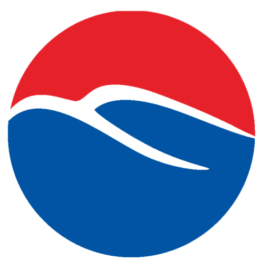The marking line’s visibility during the day depends on the quality of the pigment, which is relatively easy to recognize. The visibility at night, that is, reflectivity, is affected by many factors such as the quality of reflective glass beads, the choice of glass particle size, and the construction control of glass beads from the perspective of glass beads. The visibility of the marking line involves two key links: material selection and construction.
How to Choose Glass Beads?
First of all, the selection of reflective glass beads for paint must grasp two principles in terms of materials, appearance, and performance indicators: ①The quality is guaranteed, and flawed and defective glass beads will not be used; ②Different coated glass beads should be used in conjunction with the specified marking. This is the essential material source guarantee to ensure the reflective performance of the marking. So what factors should be considered in the selection of glass beads?
Colour
Try to avoid choosing blue-colored glass beads but choose white-colored glass beads.
Rounding rate
The rounding rate directly affects the retroreflective ability of the reticle—the higher the roundness of glass beads, the better the reflective performance.
Transparency
The higher the glass bead’s transparency, the fewer impurities, the less energy is lost when the light is refracted back into the glass bead, and the better the reflection.
Reflective index
The higher the reflective index, the better the reflective effect. According to GBT24722-2009 standard, it can be divided into low reflective index glass beads (1.50≤RI <1.70), medium reflective index glass beads (1.70≤RI <1.90), high reflective index glass beads (RI≥1.90) according to different particle sizes. At present, the reflective index of glass beads commonly used in road markings in China is generally around 1.50, while the reflective glass beads used in reflective signs reach typically 1.90. The two can be distinguished by visually observing the reflective brightness of the characters and markings at night.
Glass bead coating
Different marking paints should choose coated glass beads suitable for it. The two-component surface spreading beads use a silane coupling agent; the hot melt surface is extending glass beads use silicone oil coating, and the water-based marking surface spread reflective glass beads are best not coated. If the choice of surface spread glass beads is wrong, the adhesion of reflective glass beads and markings will decrease.
Construction Requirements of Road Marking Glass Beads
The new iridescent reflective material is a new concept of reflective material, which can overcome traditional marking defects and significantly improve the safety level of road marking. Whether in the daytime or the rainy night, it can still bright reflect light, make vehicles walk all the way, and ensure driving safety on a rainy night. It is a replacement product of ordinary glass beads. The bright Road Marking Glass Beads’ embedding degree for road marking in the reflective material reaches about 60%. The construction amount of the colorful reflective glass beads should be 180 ~ 200g /㎡。 the dry reflective brightness remains at 200 MCD / Lux / ㎡, the wet reflective shine is also maintained at 150 MCD / Lux /㎡. Simultaneously, the highlighted reflective glass beads used in the reflective material have been specially treated against pollution with the excellent anti-pollution ability and further enhanced durability. While playing the safety role of road marking, it can also significantly reduce the maintenance cost in the later stage of road marking.
